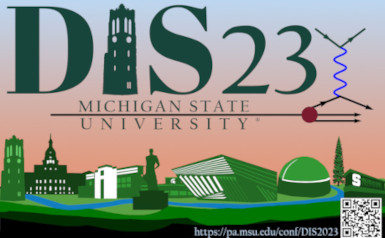Speaker
Description
Quarks that are transversely polarized inside a transversely polarized nucleon are described by the transversity distribution, $h^q_{1}(x)$. Since $h^q_{1}(x)$ is a chiral-odd function, the only way to access it is through a process where it couples to another chiral-odd function, such as the spin-dependent interference fragmentation function (IFF) in $p^{\uparrow}p$ collisions. The coupling of $h^q_1(x)$ and IFF results in an experimentally measurable di-hadron correlation asymmetry, $A_{UT}$. Precise measurements of $A_{UT}$ at high center-of-mass energies, $\sqrt{s}$, are essential for accessing $h^q_1(x)$ at high $Q^2$. Previously, the STAR experiment at RHIC has measured non-zero $A_{UT}$ using $p^\uparrow p$ data at $\sqrt s= 500$ GeV recorded in 2011 with an integrated luminosity of $25$ pb$^{-1}$. In 2017, STAR collected additional $\sim 350$ pb$^{-1}$ of $p^\uparrow p$ data at $\sqrt s=510$ GeV, which will significantly improve the statistical precision of $A_{UT}$ measurement and thus further constrain global fits of $h^q_1(x)$, especially for $0.07
| Submitted on behalf of a Collaboration? | Yes |
|---|---|
| Participate in poster competition? | No |




